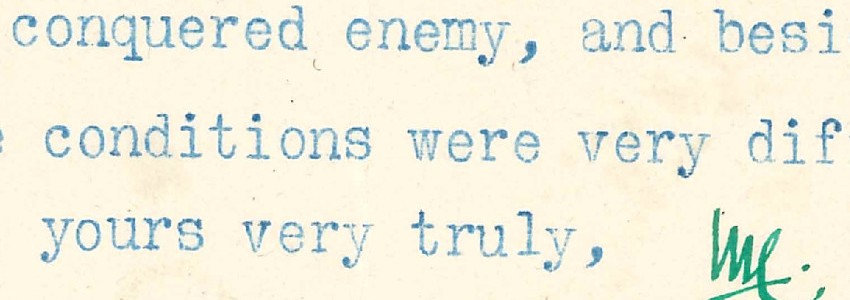
A Letter from Sir Mansfield Cumming to ‘My dear Hoare’
This letter from the first director of what was to become the Secret Intelligence Service (better known as MI6) Sir Mansfield Cumming, to his head of mission in Rome, Sir Samuel Hoare, is part of the Templewood collection here in the Manuscripts department of the University Library. It is a tantalizing glimpse of espionage in action and leaves the reader hungry for information.
Who was ‘R’? What was this mysterious ‘business with the ecclesiastics’? Clearly there has been some kind of incident, and Mansfield Cumming is keen to emphasise that he regrets it, and was not personally responsible.
Hoare was an experienced intelligence officer, having previously been head of mission in St. Petersburg, from where he sent the first communication to the west confirming the death of the Mad Monk, Rasputin. While in Rome, Hoare met Benito Mussolini, who was at that time editor of a right wing Italian newspaper. The British were desperate to keep Italy on their side, and so bankrolled Mussolini’s propaganda efforts to the tune of £100 a week.
The second half of the letter is more informal, almost chatty, and looking forward to new activities at the end of the war. The remark about how Hoare will ‘shortly have to transfer your activities to the House of Commons’ is, unfortunately, not an indication of any Establishment wide conspiracy of espionage, but rather a reference to the fact that Hoare had been since 1910 the MP for Chelsea, and would presumably be resuming his political role after the war.
The letter was written the day after the conclusion of the Second Battle of Le Cateau, where the British attack had captured the St. Quentin-Cambrai railway, 250 guns and 12,000 prisoners, advancing 11 miles in 5 days. With similar gains being made elsewhere, the Central Powers were staring defeat in the face. The reference to ‘this new development’ references the message sent on the 5th of October from the German government to American president Woodrow Wilson indicating their willingness to seek a negotiated peace along the terms of the Fourteen Points Wilson had laid out in a speech on the 8th of January 1918.
The letter was originally restricted until 2005, but was actually opened by permission of the Cabinet Office in September 2001. Mansfield Cumming was famously the inspiration for spymaster ‘M’ in Ian Fleming’s James Bond novels. He has signed the letter in his legendary trademark green ink, which is still used by the current head of the SIS. Interestingly, he has signed with both his initials, and not the ‘C’ of legend.
The letter can be found at classmark MS Templewood [III:4;75]
Jack Dixon, Department of Manuscripts and University Archives.

